Head lice are consistently considered to be one of the most disgusting parasites which are difficult to notice and hard to treat fast. It is tricky but possible if you are cognizant of the most effective and safest treatment methods. Some wisely trust in medicine, others believe in the power of natural remedies. Who is right and what is the best treatment for hair lice?
We have surveyed scientists and physicians as to what is the most effective ways of guaranteed lice removal. Here you will learn how to recognize an infestation at the early stages, which shampoos work and which are absolutely useless, how to comb your hair properly and whether it is possible to kill lice using mayonnaise?
We will tell you about to the entire process of lice removal, give tips and show you how to protect yourself from relapse. At the end of the article you’ll find TOP-4 best lice shampoos. But let’s take first things first: let’s start with the symptoms.
Table of Contents:
- Lice Signs & Symptoms
- The best way is a medicated shampoo
- Active Ingredients of Lice Shampoos
- Best Lice Shampoos & Cream Rinses
- 7 Tips on How to Use a Comb
- How to Prevent Lice: Products and Tips
Lice Signs & Symptoms
A head louse infestation can always be identified before it gets to the “head swarming with lice” stage. Common sense, attention to head and house hygiene will help you.
What signs should keep you alert?
Eggs (nits). While a couple of small lice can get lost in thick hair, nits are much more noticeable, especially if you are meticulous in regard to hair care. A female louse attaches the eggs ¼ of an inch away from the scalp, and they look like little white specks. The nits attached over ¼ of an inch away from the base of the hair shaft are almost always dead or already hatched. It feels like they are grains of sand in the hair roots, which you can touch when shampooing. But, unlike some debris or dandruff they are nearly impossible to remove with your fingers.
Larvae and adults.Yes, sometimes they are not easy to notice because of their small size (larvae are tinier than adults), but adult lice run around in the hair. They are especially active at night, so you’d better inspect your (or your child’s) head at night. Do it as soon as possible once your kid is back from summer camp! Use a magnifying glass to look at the entire head, and don’t forget divide hair into different strands. Pay special attention to the occipital region of the head and behind the ears, as these are favorite spots of parasites.
Feces. Just like any other blood-sucking insects, lice may be invisible, but they have not yet learned to hide their feces. Pay attention to dark spots on the scalp as these are signs of live adults. Also check your clothes in the neck and shoulder area, and the pillowcases for these spots.
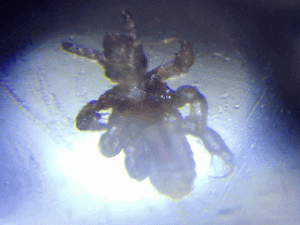
Above is an image from my personal experience with Lice. This is a louse that hatched one week later after treatment with special shampoo and many hours of combing. My research indicates that despite still moving (albeit slowly) the louse is not viable to reproduce as it has been damaged by the chemical treatments. However, it is an excellent reminder to follow treatment instructions very carefully and be thorough. Note his needle like “feet” for clinging tightly to the scalp and hair shaft.
Head Lice Symptoms: What Should You Pay Attention To?
As a rule, the symptoms are crystal clear. This is especially true for infected children under 12 years of age, whose scalp is more susceptible to bites than that of adults. The latter, incidentally, completely lack sensitivity to bites in rare cases. Typically, the following symptoms are observed.
- Severe irritation and scalp itch
As the Ohio State University Extension scientists explain, when a louse pierces human skin with its jaws, it injects histamine together with saliva. The former causes irritation and itching, and can even provoke allergic reactions in the worst-case scenario. By the way, all the blood-sucking insects are doing the same, so the reaction to any insect bites may be allergic.
- Head, neck and ears scratch
This symptom is the result of a previous one. It is especially common among kids who don’t always realize that such severe itching should be reported to adults, they simply keep scratching instead. Secondary infection is possible due to that (scalp bacteria can cause it).
- Tingling or motion sensation in your hair
This sensation is felt because the lice crawl fairly quickly – about 1 inch in a few seconds.
- Insomnia
Just like the bed bugs, lice are especially active at night and bite at night more.
- General irritation amid all the unpleasant symptoms
These horrid symptoms will unlikely go unnoticed, but we hope that you’ll be able to detect them at the earliest stage if you use our tips.
The best way is a medicated shampoo
In this section we’ll describe all known methods. There are only 2 methods approved by science.
Which one is more effective and reliable? Actually, it is using lice shampoos (pediculicides) along with combing because this helps to eliminate all blood-suckers: pediculocides work against larvae and adults while combing will remove the nits. Pediculicide action is proven both by scientists and doctors, in contrast to natural products, which often do not work, or sometimes have a placebo effect. Yes, many believe in natural remedies, but we do not encourage you to experiment with them. Anyway, we have to tell about all possible treatment methods and it is up to you to choose the most appropriate one.
Lice shampoos’ (pediculicides), gels’ and sprays’ action
The most common pediculicide is a medicated shampoo, which helps kill adults, and eliminate further breeding at this stage. Some of these shampoos have ovicidial effect, i.e. they can kill nits. But basically there is no such effect or it is weak and therefore requires repeat use of shampoo in 7-10 days to get rid of the new ones that have hatched from the eggs.
Why are the nits so difficult to neutralize? Well, the aim of pediculicide shampoos is a louse. Once you inflict damage to it, you can kill these parasites. But when a louse is only on the nit stage, the nervous system is not formed completely, so pediculicides have barely any effect on nits. Instead, they do well with larvae and adults. The shampoos work by killing the adult lice and stop them re-producing, but the nits that have already been laid will hatch after 7 to 10 days, thus the re-treatment recommendation at this point. Still, to choose a truly effective treatment, you need to know what it should contain.
Effective and Not so Much Effective Active Ingredients of Lice Shampoos (Pediculicides)
Permethrin and pyrethrin – YES, they are effective
The scientists believe that chemical insecticides that are often used against certain insect species for too long (over ten years) can partially lose their killing action since the insects become resistant to the chemicals and pass such resistance on to next generations. Most products, including shampoos, contain widespread insecticides, namely permethrin or pyrethrins. They are considered to be effective, but as Mike Potter, Extension Entomologist from University of Kentucky College of Agriculture claims , some lice populations may also acquire resistance to the effects of permethrin-based products. He adds: “Resistance to pyrethrin/piperonyl butoxide formulations appears to be less common”.
Mind that both permethrin and pyrethrin act on the adult lice, but do not have ovicidial effect, i.e. they do not kill the eggs. An adult louse should die within 30 minutes (when using pyrethrin) to several hours (when using permethrin) after medicated shampoo treatment. If you find live parasites after the time stated (up to 8 hours), then the lice are resistant to this insecticide. In this case, stop using this product and get another shampoo (if you used a permethrin one, buy pyrethrin and vice versa). Repeat and wash the head with shampoo after 7-10 days.
CDC (Centers for Disease control & prevention) warns the users of the pyrethrin use restrictions: “Pyrethrins generally should not be used by persons who are allergic to chrysanthemums or ragweed. Pyrethrin is approved for use on children 2 years of age and older”. Permethrin is considered to be milder, as shampoos containing it can be used even on 2 month old babies
Lindane – YES, it is effective, but toxic
In the past the insecticides containing lindane were quite popular. But, as the University of California Statewide IPM Program and CDC experts explain, lindane is extremely toxic and its use is associated with unpleasant side effects for both the patients and the medics. It also strongly pollutes the water and has a lot of use restrictions: it is forbidden to treat pregnant women, the elderly, infants, people with a variety of different diseases and those weighing less than 100 pounds with it. Therefore, although lindane shampoo 1% is approved by the FDA for the treatment of head lice, it is not recommended as a first-line treatment. “While lindane is still available by prescription, pyrethrin and permethrin are safer, more effective, and less polluting than lindane “.
Enzymes (oxidoreductase, transferase, lyase, hydrolase, isomerase, ligase etc) – NO, they are ineffective
Nowadays the so-called enzyme shampoos and gels containing non-toxic enzymes are very popular. They are promised to interrupt the breeding cycle by dissolving the adults’ exoskeletons and the glue that grips nits to the hair. Allegedly, after using this shampoo or gel, nits are actually fall off your hair.
This doesn’t turn out to be true, as according to the same University of California Statewide IPM Program specialists: “Enzymatic treatments, including shampoos that claim to dissolve eggs, the cement that attaches eggs to the hair, or the exoskeleton of the adults, are also available to use against head lice. Although these materials are very appealing because of their relative nontoxicity, in university-conducted research trials none of them has yet proven to work as advertised”.
Olive, coconut oil, tea tree oil – NO, they are ineffective, but there is certain repelling action
What do you do if you do not want to treat your head with chemicals? Scientists are still arguing about the effectiveness of oils. Some believe that oil absolutely does not work, while others, like the University of California Statewide IPM Program specialists recommend trying soap shampoos containing coconut or olive oil. To observe the effect, you need to wash your hair with this shampoo 3 times with a 4 day interval. However, there may be no killing effect as no one gives a guarantee – so it’s best to turn directly to the specialized shampoos. On the other hand, the oils can produce repelling effect, so as a preventive measure, you can use tea tree oil based treatment.
“Homeopathic pediculicides”: Salts containing sodium chloride, i.e. table salt, minerals, plants, animal material – NO, they are ineffective
Homeopathic shampoos or gels are a waste of time and money. Homeopathy does not work in this area: you will only end up having even more lice while you wait for a shampoo to work. Gels will not cope with the task either, although, they are promised, like products with enzymes, to dissolve the nits glue.
Conclusion : don’t be driven by ads! You’d better use proven permethrin or pyrethrin shampoos as they are most effective.
Best Lice Shampoos & Cream Rinses
Don’t be astonished that we’ve picked only two products. Surprisingly, among the many louse shampoos found on there are only two worthy and proven options that are approved by both doctors and the FDA and that really work. They are NIX and RID. Therefore, we will tell you about them. Let us warn you that there is one shampoo that is very popular, but is homeopathic. As we have mentioned above, according to the scientists, homeopathy is useless.
Permethrin Shampoo – NIX – Family Pack 2×2 ounce bottles
This Nix set for Check current price for contains a special permetrin 1%-based cream rinse. This pediculicide is also approved by the FDA for the treatment of head louse hence the Nix products are recommended even by the Centers for Disease Control and Prevention.
Moreover, permethrin is considered to be gentler than pyrethrin that is why you can use a permethrin cream rinse even for treatment of children from 2 months of age and older. For convenience the set contains not only the 2 pediculicide bottles but also 2 nit combs which are especially important if you want to simultaneously treat two patients. Conveniently, all of this can be bought for only Check current price
FYI: The manufacturer claims that Nix products will kill both adult lice and eggs. We’ve already explained that nits cannot be killed with pediculicides, they can only be combed. Don’t blindly rely on a single product. The treatment must consist of two parts: shampoo (or cream rinse) head treatment and combing!
One of truly effective shampoos which can be used for kids over 2 years old is the RID for Check current price manufactured by the world famous pharmaceutical giant Bayer. The product is made in the USA. Its active ingredient, Pyrethrins (naturally occurring pyrethroid extracts from the chrysanthemum flower) was approved by the FDA.
This is a kit containing of 4 items. The system is complex.
- Step 1 is lice killing shampoo treatment (the active ingredient of the shampoo is Pyrethrum extract);
- Step 2 is using gel which is to be applied when combing for facilitating the process;
- Step 3 is using the lice control spray (its active ingredient is 0.5% Permethrin).
The manufacturer, in this way, first suggests that you wash your kid’s hair with a special pediculicidal shampoo; then use the gel for removing the lice and nits out of their hair. Since the parasites attack not only humans but also their accommodation, the kit also contains spray for treating the furniture, mattresses, pillows and other household objects which aren’t supposed to be washed in the washing machine (remember to treat your car as well).
Price: Check current price
Warning! The next product is the homeopathic product, which is sold on and is a bestselling item in the Lice Treatment Kits category. Licefreee Spray is one of the cheapest sprays (Check current price) and perhaps that explains its popularity.
The label states that it contains natural ingredients: sodium chloride, benzyl alcohol, and water. What alarmed us is the inscription that this is a homeopathic drug. As we’ve mentioned above, the scientists confirm that homeopathy cannot kill a louse.
- Don’t use a shampoo and a conditioner before using a lice shampoo. It is recommended for children to cover their faces with a towel during treatment to make sure none of the treatments gets in their eyes or mouths.
- When treating head, wear gloves and push your hair when washing it. It is important that the insecticide does not get in your eyes, mouth, nose, body and mucous membranes; do not use it as a regular shower shampoo!
- Use cool or warm water for the treatment. Hot water opens scalp pores and allows for many synthetic chemicals to be absorbed.
- Be consistent! Not only you have to wash your head, but you should also make sure that every louse is dead and then carry out repeat treatment within 7-10 days. This is done to get rid of the larvae that used to be nits and thus survived.
- If you have asthma, allergies or if you are pregnant, consult your physician before using this or any other medicated shampoo.
- If many people undergo treatment, they should use the lice shampoo simultaneously, within 24 hours in order to prevent repeat infestation.
- You can wash your head again or visit a swimming pool only 2 days after using a medicated shampoo, or else the treatments effect can be reduced.
FYI: Let us remind you that the combination of a lice shampoo and combing is the most effective type of treatment. After you’ve killed all of the adults and larvae with shampoo, it is a must to comb the nits.
Which Lice Comb Should You Pick and How Do You Use It?
Combs are the only effective remedy for nit removal. The process is long, tedious, but 100% effective. Most importantly, you should be careful and sure to liquidate all the eggs, or else the lice will breed and torment you at night again. But do not rush immediately to look for any comb as a mediocre one will not work.
Plastic or Metal?
Use a metal comb with long teeth. Ordinary plastic ones are not suitable to remove the lice out of your head. They are useless because they bend easily and keep their teeth are separate from each other. Short-toothed models (both plastic and metal) won’t be suitable either. You might like not only ordinary metal, but also modern electronic devices, which have the functions of a comb and a vacuum cleaner. With such a device you will not have to remove by hand any nits found as they are stored in a container inside.
All metal combs are similar as they have long teeth made of steel and tightly pressed to each other with a comfortable handle. A classic bestseller, however, has long been renowned by thousands of customers.
Nit Free Terminator
It is a best seller in the Lice Combs category and has over 1600 customer reviews.
This is quite a large item here before us; its dimensions are 3×4 inches. It is made of stainless steel and the teeth are micro-corrugated so that the nits which are firmly attached to the hair are hitched up better. There are also corrugations on the handle. This is made to prevent the comb from sliding out of your hands when dealing with very thick hair. Nit Free Terminator is durable enough for the manufacturers to issue a lifetime warranty for it. Its country of origin is the USA.
The buyers of this product note that it is more advantageous than many of its rivals. According to them, the micro-canals which are located on the teeth can really grip on more nits. In addition, the Terminator works fine for thin and fragile hair as well. We weren’t able to find any complaints concerning the breakage of it, but we were able to find a few pieces of advice instead. The customers recommend using it on wet hair. Over 90% of the consumers consider the Terminator useful.
Unlike others, this one is available in sets of 2, 6, 10, 12, 24 and even 100 units for mass treatment. The reasonable price begins when you buy a set of 6 units or more.
Price: (depending on the number in a set) Check current price
Electronic combs are ambiguous gadgets. On the one hand, they facilitate nit removal and safeguard others against as the found eggs are not touched or shaken on the fabric due to the fact that some models of these devices work like vacuum cleaners and thus all eggs are collected in a container inside the device, which is then easily possible to flush down the toilet.
V-Comb
It is a combination of a hair brush and a mini vacuum cleaner. It is the most gentle and soft hackle because its metal teeth ends are rounded. When you comb the hair, vacuum sucking in its handle starts to work and all of the lice and nits gripped are transported into disposable soft bags. Price: Check current price
Warning! Not all the electronic units are equally efficient. The manufacturer of RobiComb for Check current price promises that this battery powered product will kill all blood-suckers on contact by electrocution. Don’t fall for these empty promises though as the University of Nebraska-Lincoln scientists have tested Robi and revealed that “The manufacturer claims lice trapped in the teeth are electrocuted, but we have not always found this to be true.“ That’s why the result is all the same: 42% of the customers don’t consider this product effective and also they are afraid to have some electric charge on their heads. Are you ready to spend money on such strange experiments?! Don’t do it, electrocuting doesn’t kill nits!
7 Tips on How to Use a Comb
Let’s now get back to the actual technique, we’ve drawn up the main tips:
- After you have washed your head with louse shampoo, dry your hair a bit so that the water doesn’t drip off them. Dry your hair completely if you use an electronic device.
- Apply some oil (olive or tea tree oil) or hair gel/conditioner on the roots of your hair to facilitate the process. You can use either regular hair gels, conditioners or special ones, such as ones with rosemary extract.
- Prepare: make sure the room is well-lit, pour some water into a bowl to clean the comb or prepare a dense transparent bag. Also place bright cloth under your hair (red, for instance) to make white and brown nits as well as white-grayish adults equally visible.
- Comb all hairs starting from the temple down to the ends as close to scalp as possible in all directions. You may find it easier if the hair is pre-divided into small strands across the head. Carefully inspect the comb for eggs and live lice, when washing it in the bowl with water or cleaning off in the bag. The procedure can take up an hour or more, especially if the hair is very thick, long and light.
- If certain nits cling to the hair tightly, pinch the hair with your fingernail and draw the nit up the shaft of the hair.
- Flush the water from the bowl down the toilet regularly and re-fill the bowl.
- After you have combed the entire head, wash your hair with regular shampoo to wash off the oil. Clean the comb (or better, boil it for 15 minutes if it is made of metal).
It’s important to protect the person who is going to comb a contaminated patient from possible infection. We have prepared several tips for these brave warriors.
- Make sure that you do not touch your hair while nit-picking as you can catch lice! Secure your hair with hair clips, bobby pins, etc. or tie it back.
- Take off any bracelets, rings or other jewelry.
- Wear gloves.
- In order to protect your clothes, wear a garbage bag over them so that it doesn’t hold down your movements and covers your front. Don’t forget to take it afterwards (over your legs and not over your head, obviously).
- Once you’re done, place the gloves and the garbage bag into a plastic bag and dispose of it. Wash your hands well with soap.
More myths & facts about getting rid of nits you’ll find in How to Get Rid Of Nits For Sure?
Lice Repellent Shampoo. How to Prevent Lice: Products and Tips
You can make your own lice prevention shampoo by adding a few drops of essential oil in your regular shampoo, or you can buy a ready-to-use one. It depends on your preferences, and on which essential oil smell is most pleasant for you: tea tree, lavender or rosemary oil?
If you prefer 100% organic products and tea tree smell, read our detailed review of Using Tea Tree Oil to Repel Lice.
Below we have listed some ready-to-use shampoos with the rosemary oil which can be used on your or your child’s head.
Fairy Tales Rosemary Lice Repel Shampoo, 12 fl.oz. + Conditioner, 8 fl.oz. – Lice Prevention Shampoo & Conditioner
This is a classic shampoo made by a famous manufacturer. It is positioned a children’s product, but it can be used by adults as well. It contains a whole range of vitamins, minerals, and the main lice repellent: essential oils. This preventive product costs almost Check current price and has a decent rating. A free bottle of a brand hair conditioner is supplied with the shampoo.
The manufacturers boast of the fact that their shampoo is officially recommended by the pediatricians. Apparently the clinical tests have shown an effectiveness of 90% of using this shampoo and conditioner along with the brand’s spray. However, we didn’t find anything about some particular licenses or certificates of any medical institutions. The customers praise simultaneous use of the shampoo and the conditioner as they both do their job quite fine.
Please note that you can buy the shampoo separately from the conditioner on Fairy Tales Repel Shampoo, Rosemary, 12 Fluid Ounce will only cost you Check current price! Those who are buying large volumes (or the parents of many children) can buy a 32 oz. bottle. Fairy Tales Rosemary Repel Shampoo, 32 Ounce costs only Check current price.
Lice Shampoos Comparison Chart
| Product | Type | Active Ingredients |
NIX Permethrin Lice Treatment Family Pack 2×2  Check Price | Elimination kit | Permethrin |
RID Complete Lice Elimination 3 Item Kit  Check Price | Elimination kit | Pyrethrum extract |
Licefreee Check Price | Elimination kit | Sodium chloride, benzyl alcohol, and water. This homeopathic product is not effective |
Nit Free Terminator  Check Price | Metal | – |
V-Comb  Check Price | Electronic | – |
LiceGuard RobiComb  | Electronic | It’s not effective |
Fairy Tales Rosemary Repel Creme Shampoo+ Conditioner  Check Price | Preventive shampoo & conditioner | Rosemary, citronella, tea tree, mint, and sage and lemongrass oils |
10 Prevention Tips
Here are some lice prevention tips as per the U.S. Department of Health and Human Services:
- The main principle of prevention is being aware of possible outbreaks in school. Pull long hair back into a tight ponytail and spray with hairspray to make it harder for lice to find a home.
- Try to avoid direct contamination. The most common way to get infected is a “head-to-head” contact. Learn and teach your kids a simple rule: don’t let your hair touch strangers.
- Obviously, the kids are not good at controlling themselves. If they don’t listen to you, you’ll have to learn to identify head louse infestation at an early stage. Comb your kids’ hair regularly. The nits will remind you of dandruff which is stuck to the hair and won’t get away. Tiny lice will be given away by their movement: they are barely ever static.
- Watch your kids’ behavior on various events or when they play together with the others.
- If you’re going somewhere where you are highly likely to get infected with lice, apply a few drops of the tea tree or lavender essential oil on the temples and on the back of a kid’s head. Lice hate such smells.
- Don’t wear other people’s hats and outerwear in vain and don’t use their brushes and towels.
- Sleeping on someone else’s bed or carpet is also risky.
- Washing the infected sheets in hot water (of the temperature up to 130° F) with hot drying is guaranteed to kill parasites.
- The parents are to check the kids’ heads most often at the beginning of the school year and after winter holidays.
- Disinfect the brushes which the kids have taken to a summer camp, kindergarten or any boarding school.

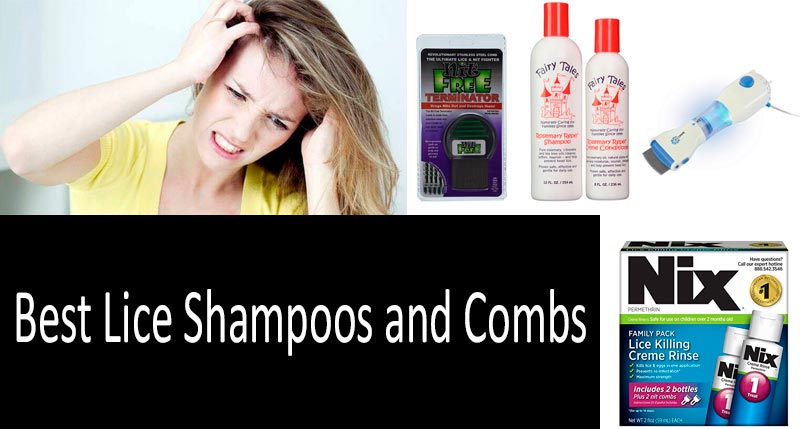







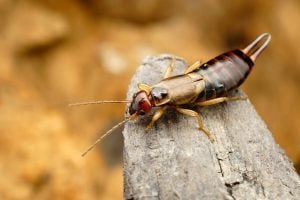
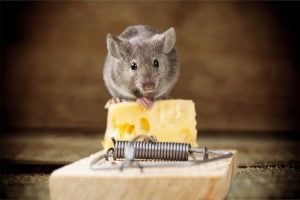
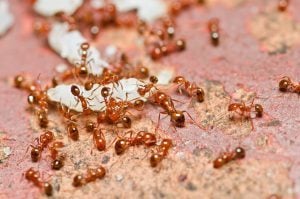
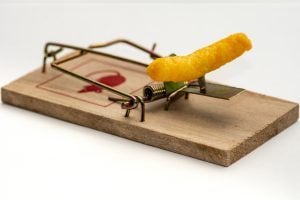
1 thought on “Best Lice Shampoos: What the Scientists’ Say About Pediculicides”
The first time I ran into this problem, I had no idea where I caught these lice. I’m not experienced, I do not know what’s better, comb or lice shampoo. Any suggestion for this question?
I need to get rid of them as quickly as possible, since at work I took an optos only for 5 days!